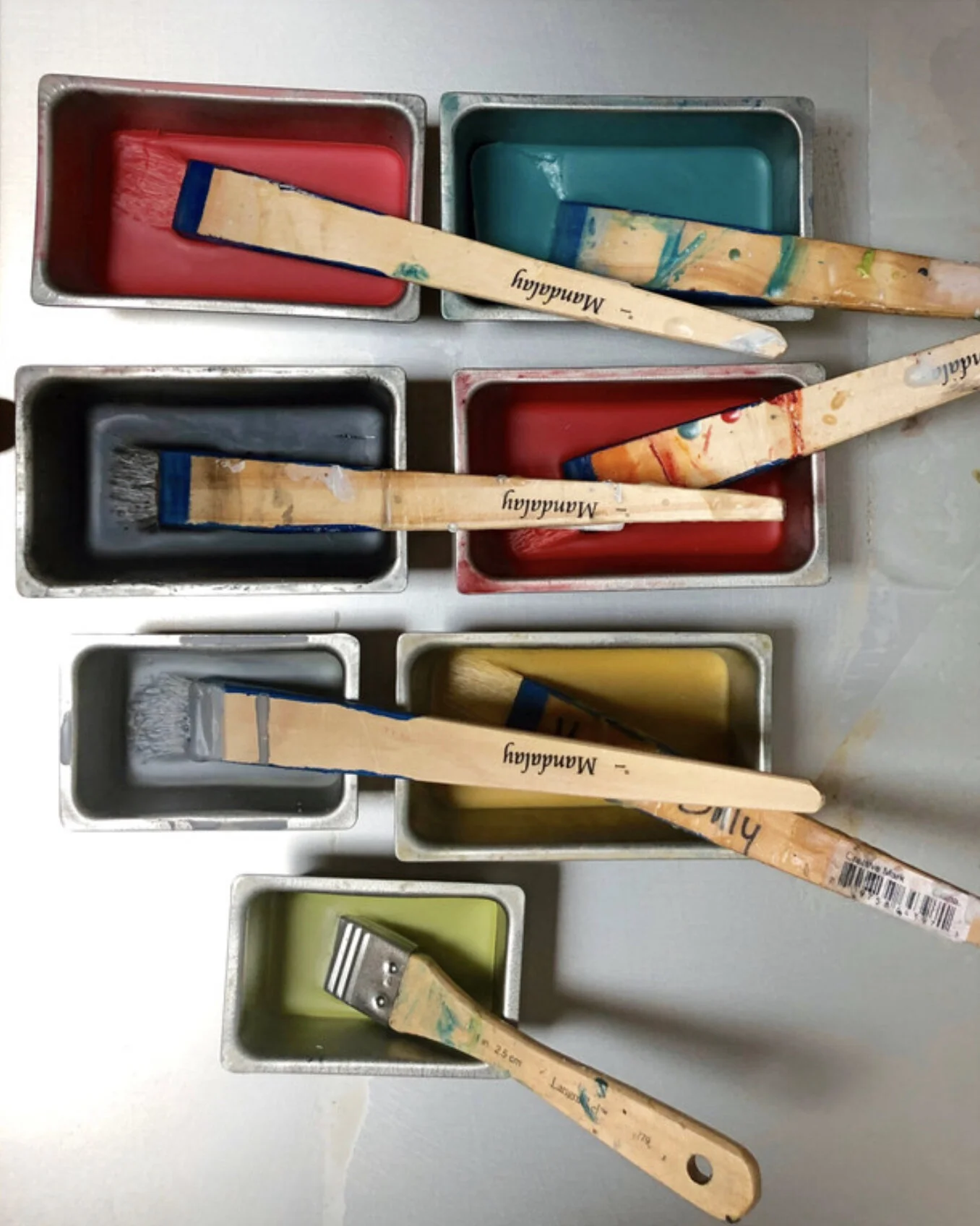PROCESS
Encaustic paint is beeswax based paint, that is composed of beeswax, resin and pigment (color). It is heated, and applied with a brush to a rigid and porous surface.
Thin coats of wax are applied and fused, building up multiple layers, creating a rich and luminous surface. Mark-making, texturing, embedding, etc, can be applied as the layers build.
Once cool, careful scraping reveals details and color from below, giving beautiful depth, interest and luminosity.
SAFETY:
The wax is paintable at 180-200 degrees. The workspace must be vented at all times.
DURABILITY:
Beeswax is impervious to moisture, therefore, encaustic paintings are durable and archival. They will not deteriorate, fade or yellow.
PROTECTION & CARE:
Encaustic paintings should not be exposed to direct sunlight or extreme temperatures; 40-100 degrees is safe. They are vulnerable to scratching and chipping if not handled carefully. Light buffing with a soft, lint free cloth, will refresh the luster.
HISTORY
500BC:
Encaustic painting was practiced by Greek artists, and used by shipbuilders to repair and weatherproof their ships. The addition of color gave rise to the decoration of warships and later merchant ships. It was also used to adorn sculptures, murals and architecture.
100-200AD:
The most well-known, ancient encaustic paintings are the Fayum mummy portraits of Egypt. As part of their mummification practice, a painting was placed on top of the mummy in memoriam. The portraiture artists developed impressive skill, creating life-like facial features. Despite being over 2000 years old, they are still on display in museums, without showing signs of deterioration.
Middle Ages- 18th century:
Encaustic painting became a lost art. The complexity of needing a constant heat source to keep wax molten, was a significant challenge. It was replaced by other types of paints, such as tempera and oil, which were less expensive, faster, and less challenging to work with.
Mid-18th century:
Encaustic painting was revived briefly, mostly in Europe, as artists explored the ancient art form. But again, without modern heating devices, encaustic painting fell back into obscurity.
20th Century:
With the availability of modern technology, and a variety of useful tools, encaustic painting became more accessible to artists. It’s versatility lends itself to paint, print, collage, sculpture, and pairs well with many mix media applications. In the 1950's Jasper Johns revived encaustic painting and was later credited with the modern popularity of the art form.
Today:
This versatile and alluring medium has captured the attention of artists once again. Stunning pieces are being seen globally in galleries, and making their way into the homes of fine art collectors.





